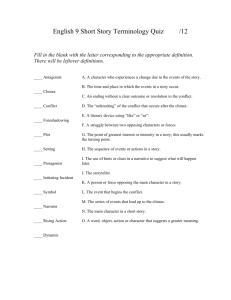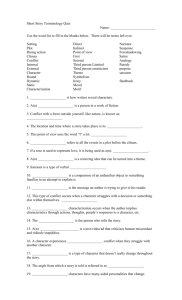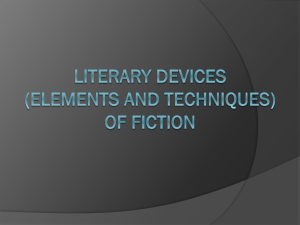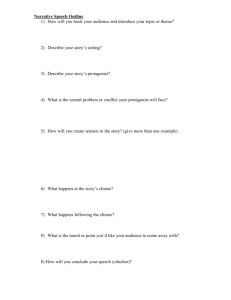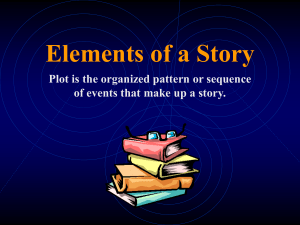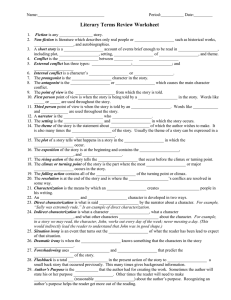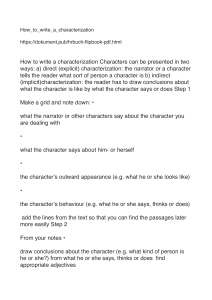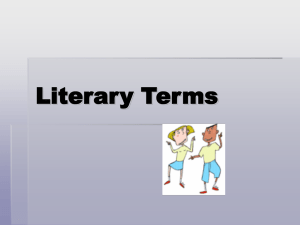Literary Terms Academic Vocabulary Unit 4:
advertisement
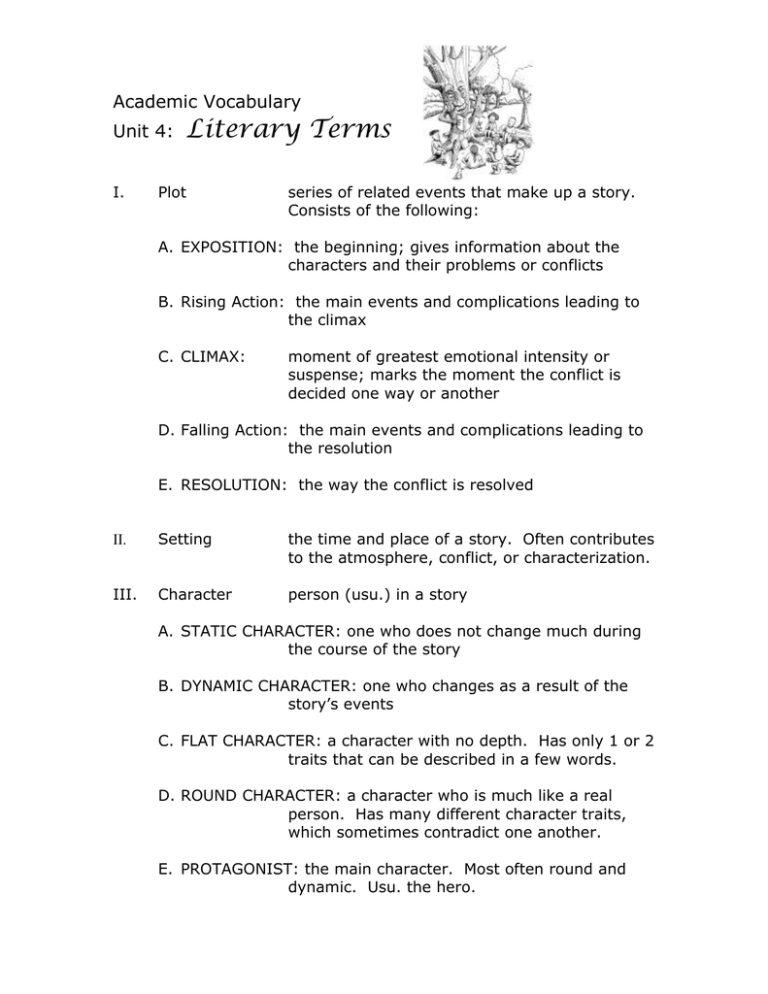
Academic Vocabulary Unit 4: I. Literary Terms Plot series of related events that make up a story. Consists of the following: A. EXPOSITION: the beginning; gives information about the characters and their problems or conflicts B. Rising Action: the main events and complications leading to the climax C. CLIMAX: moment of greatest emotional intensity or suspense; marks the moment the conflict is decided one way or another D. Falling Action: the main events and complications leading to the resolution E. RESOLUTION: the way the conflict is resolved II. Setting the time and place of a story. Often contributes to the atmosphere, conflict, or characterization. III. Character person (usu.) in a story A. STATIC CHARACTER: one who does not change much during the course of the story B. DYNAMIC CHARACTER: one who changes as a result of the story’s events C. FLAT CHARACTER: a character with no depth. Has only 1 or 2 traits that can be described in a few words. D. ROUND CHARACTER: a character who is much like a real person. Has many different character traits, which sometimes contradict one another. E. PROTAGONIST: the main character. Most often round and dynamic. Usu. the hero. F. ANTAGONIST: the character or force that blocks the protagonist. Often the villain. G. Subordinate/ often static or flat characters. May play Stock Character: important roles but do not serve as the main characters. IV. Characterization a process of revealing the personality of character A. INDIRECT CHARACTERIZATION: reader uses own judgment to decide what a character is like based on the evidence provided by the author (what the character says, how the character looks and dresses, what the character thinks and feels, what other characters think or say about them, what the character does) B. DIRECT CHARACTERIZATION: V. Point of View the author tells us directly what a character is like vantage point from which the author tells a story A. FIRST PERSON: one of the characters is telling the story using the pronoun I. We know only what this character knows and observe only what his character observes. B. THIRD-PERSON OMNISCIENT: “all-knowing” and “all-seeing” narrator is not a character in the story. Almost like a god telling the story as they know past, present, and future and can tell us what any character is thinking or feeling at any time. C. THIRD-PERSON LIMITED: the narrator, who is not a character in the story, zooms in on the thoughts and feelings of just one character. VI. THEME central idea the author wishes to reveal about the subject of a piece of literature. May or may not be a moral or lesson but not usually directly stated. VII. CONFLICT struggle, clash, or problem between opposing characters or opposing forces A. EXTERNAL CONFLICT: character struggles against an outside force such as another character (person vs. person), society as a whole (person vs. society), or something in nature (person vs. nature) B. INTERNAL CONFLICT: takes place entirely within the character’s own mind. A struggle between opposing needs or desires or emotions within a single person (person vs. him- or herself)
